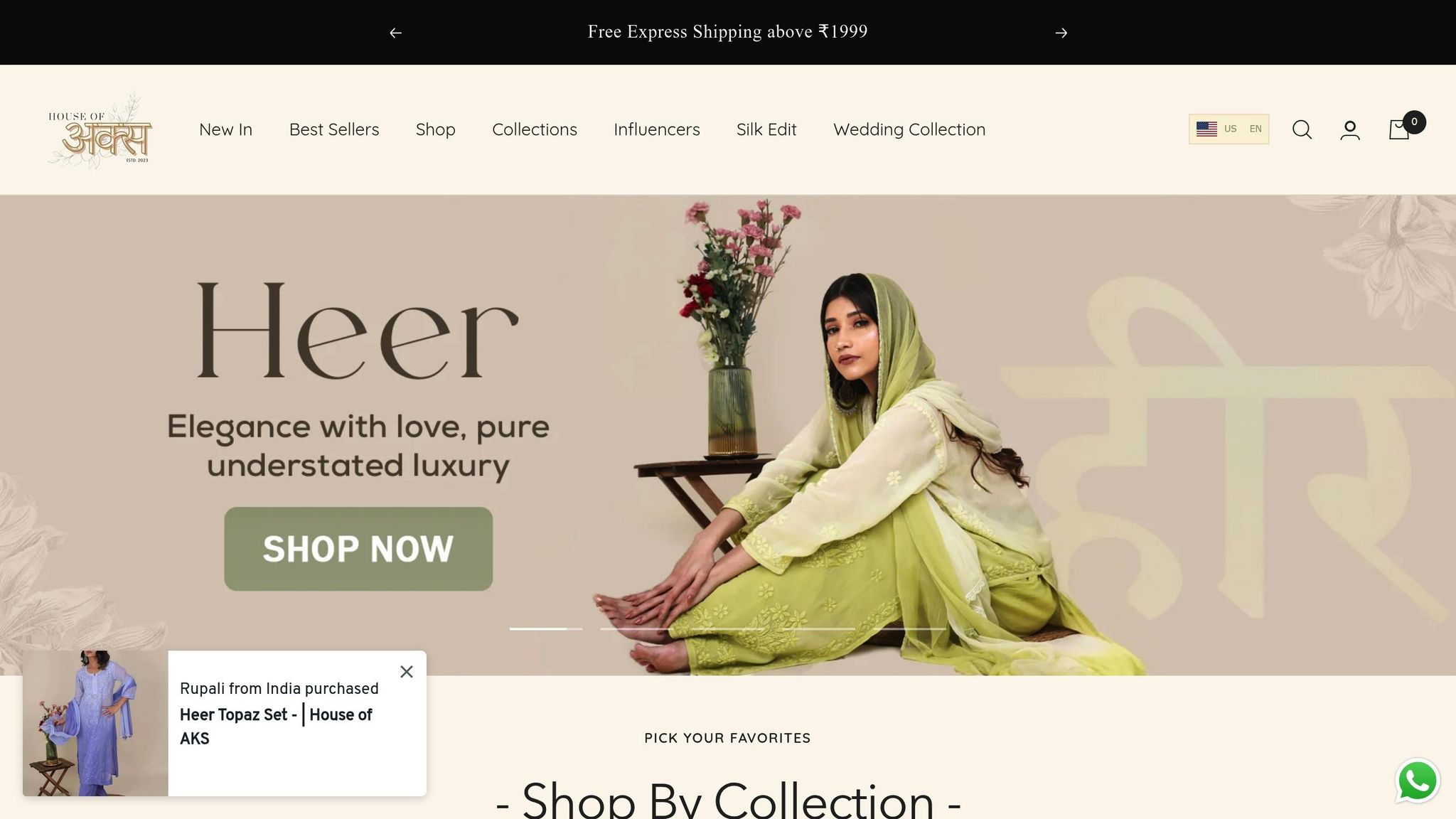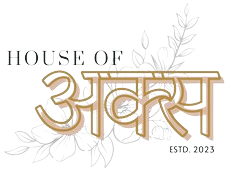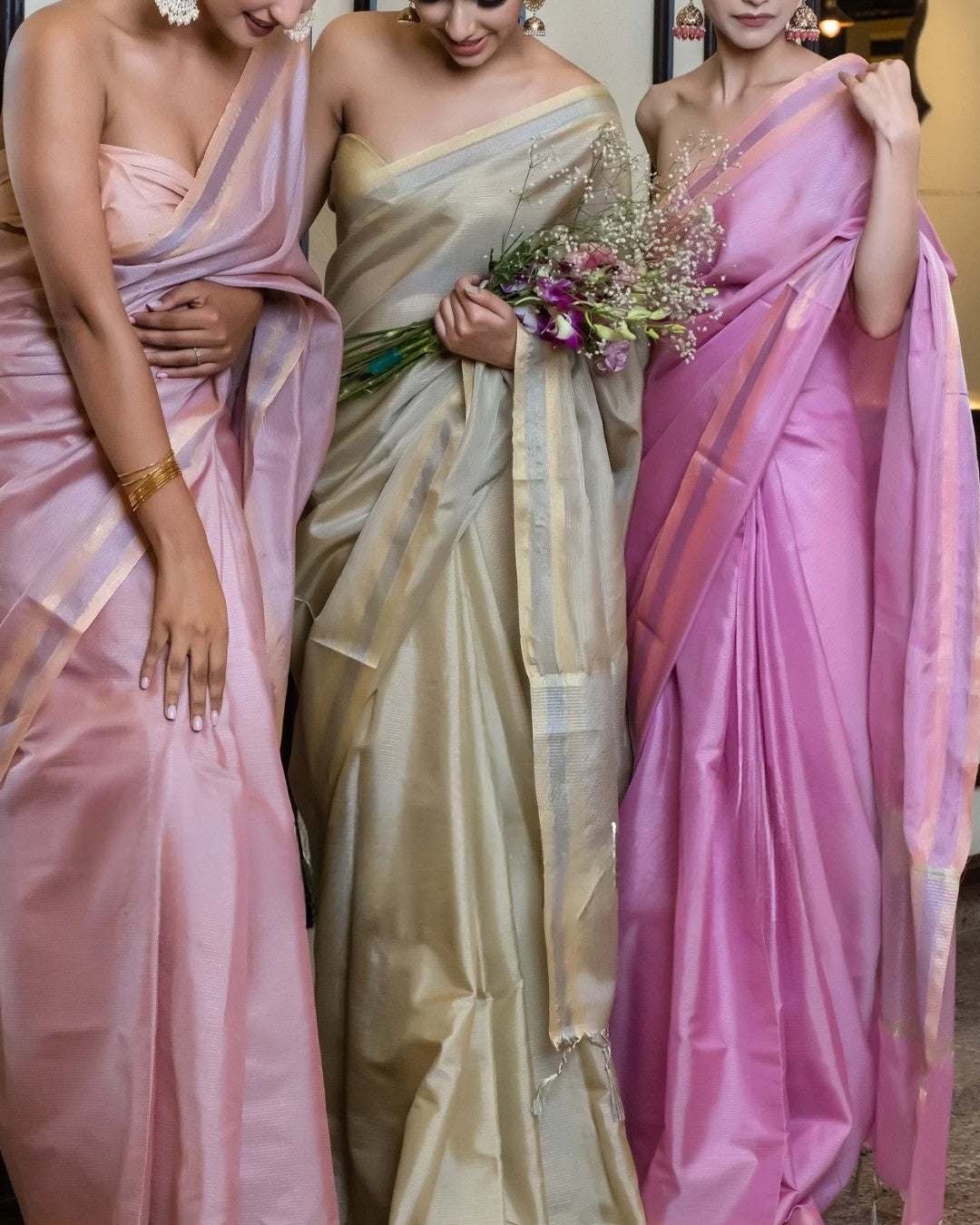How Chikankari Embroidery Promotes Green Fashion
Fast fashion is harming the planet, but there’s a better way forward: Chikankari embroidery. This craft combines hand-stitched designs with natural fabrics, offering a low-impact alternative to resource-heavy, synthetic clothing. Here’s why it matters:
- Eco-Friendly Production: Chikankari uses hand embroidery, avoiding energy-intensive machinery and reducing carbon emissions.
- Natural Fabrics: Cotton, muslin, and silk are biodegradable, unlike synthetic textiles that pollute landfills and oceans.
- Durability: These garments last longer, reducing waste and the need for frequent replacements.
- Fair Wages for Artisans: Chikankari supports skilled workers, especially women, with fair pay and better working conditions.
Fast fashion contributes to 10% of global carbon emissions, 20% of wastewater, and 35% of ocean microplastics. By choosing Chikankari, you support a cleaner planet, ethical practices, and timeless craftsmanship.
Let’s explore how this age-old embroidery offers a smarter, greener choice for your wardrobe.
How Fast Fashion Harms the Environment
Fast fashion isn't just about overflowing wardrobes; it's a major contributor to environmental damage, impacting our planet in numerous ways. The industry's high demand for resources and its unsustainable practices highlight the importance of turning to alternatives, like Chikankari embroidery, which offer a more responsible way forward. Let’s dive into the environmental toll of fast fashion.
Carbon Footprint and Resource Waste
Fast fashion leaves behind a massive carbon footprint. Textile manufacturing alone is expected to see emissions rise by 60% by 2030. For example, producing a single pair of jeans for fast fashion results in a carbon footprint of 2.50 kgCO₂e per wear - that's 11 times higher than traditional fashion consumption. Most of this comes from the production and global transportation processes, which together account for 91% of the footprint.
Water usage is another staggering issue. The fashion industry consumes around 79 trillion litres of water annually, making it the second-largest water guzzler worldwide. Adding to this, global clothing production more than doubled between 2000 and 2015, with consumer purchases increasing by 60% over the last 15 years. Developed nations contribute disproportionately, with their fast fashion habits emitting 53% more per capita than those in developing countries.
Waste and Pollution Problems
The waste generated by fast fashion is overwhelming. Every year, the industry produces 92 million tonnes of textile waste. Shockingly, 25% of new garments never even make it to consumers, and about 12% of fibres are discarded during production.
Recycling efforts paint a grim picture. Less than half of used clothing is collected for reuse or recycling, and only 1% is repurposed into new garments. Overall, 87% of the fibres used in clothing end up either burned or in landfills, leading to an annual loss of $500 billion in value.
Water pollution is another critical issue. The fashion industry accounts for 20% of the world’s wastewater and is responsible for 20% of industrial water pollution. Dyeing and finishing processes alone contribute significantly, polluting clean water supplies globally.
Then there’s microplastic pollution. Washing synthetic fabrics releases 500,000 tonnes of microfibres into oceans every year. A single load of polyester laundry can shed up to 700,000 microplastic fibres. These synthetic fibres make up 35% of the microplastics in our oceans, adding 0.5 billion kilograms of microplastic waste annually.
Social and Ethical Problems
Beyond the environmental damage, fast fashion also fuels serious social and ethical issues. The industry thrives on worker exploitation, particularly in developing countries. Out of 75 million factory workers globally, fewer than 2% earn a living wage. Women, who make up nearly 80% of the garment workforce, often endure harsh working conditions.
In Bangladesh, garment workers earn about ₹8,000 (roughly $96) per month - a mere fraction of the recommended living wage. Shockingly, labour costs during manufacturing account for only 1 to 4% of a garment's final price. The devastating 2013 Rana Plaza collapse in Dhaka, which killed 1,134 workers and injured over 2,500, underscores the human cost of fast fashion.
This industry also promotes a throwaway culture. Between 2003 and 2018, clothing utilisation dropped by 36%, with the average person discarding 37 kilograms of textiles each year. The relentless cycle of production and consumption not only wreaks havoc on the environment but also perpetuates labour exploitation by keeping costs unsustainably low.
The interconnected nature of these issues - environmental destruction, worker exploitation, and unsustainable consumption - makes the case for alternatives like Chikankari embroidery. As Patsy Perry, senior lecturer in fashion marketing at the University of Manchester, aptly puts it:
"Less is always more."
Chikankari Embroidery: A Low-Impact Craft
In a world dominated by fast fashion's heavy carbon footprint and wasteful practices, Chikankari embroidery stands out as a beautiful blend of artistry and eco-consciousness. This traditional Indian craft offers a production method that's gentle on the planet while celebrating timeless elegance.
Handcrafted with Minimal Energy Use
What makes Chikankari truly special is its reliance on human skill rather than energy-draining machinery. Every intricate stitch is created by artisans using simple tools, steering clear of the industrial processes that contribute to nearly 10% of the global fashion industry's carbon emissions. This hands-on approach not only preserves an age-old art form but also keeps the process energy-efficient and personal. The focus on manual craftsmanship naturally encourages the use of sustainable materials, free from the pressures of mass production.
Natural Fabrics and Eco-Friendly Dyes
The foundation of Chikankari lies in its use of natural materials that are kinder to the environment. Cotton and silk, the primary fabrics for this craft, are biodegradable and far less polluting than synthetic options. Organic cotton, cultivated without harmful pesticides, and fabrics certified by GOTS (Global Organic Textile Standard) ensure that both environmental and ethical standards are upheld.
Natural dyes, derived from plants and minerals, further enhance the craft's eco-friendly appeal. As one Chikankari artisan describes:
"Our colours are not brewed in chemical vats but coaxed from nature's bounty - indigo, turmeric, madder root, and pomegranate rind. These natural dyes not only protect the environment but also bless the fabric with a soft, earthy aroma and a gentle caress against your skin." - The Chikan Store
This thoughtful use of natural dyes not only reduces chemical pollution but also adds a unique, organic touch to every piece.
Zero Waste and Fabric Repurposing
Traditional Chikankari production follows a mindful, small-batch approach, ensuring every piece of fabric is used with care. Leftover scraps are transformed into smaller items, showcasing a commitment to reducing waste. Artisans also plan embroidery patterns meticulously to optimise thread usage, saving any remnants for future projects. This resource-conscious approach is a stark contrast to the waste-heavy practices often seen in large-scale industrial production.
How Chikankari Supports Slow Fashion
The slow fashion movement stands as a thoughtful alternative to the wasteful practices of fast fashion, and Chikankari embroidery beautifully aligns with its ideals. This traditional craft showcases how clothing production can prioritise both environmental care and social responsibility, offering a meaningful way forward for conscious fashion lovers. Let’s dive into how its design, artisan support, and production methods make Chikankari a cornerstone of slow fashion.
Long-Lasting and Timeless Design
Chikankari garments are crafted with durability in mind, standing in stark contrast to the disposable nature of fast fashion. The intricate embroidery, a skill passed down through generations, ensures that these garments retain their beauty and strength for decades. The designs are timeless, outlasting fleeting fashion trends and maintaining their charm over centuries. This longevity is a direct response to the staggering 92 million tons of textile waste generated by the fashion industry each year.
What’s more, Chikankari pieces are incredibly versatile. Whether it’s a casual outing or a formal event, these garments adapt effortlessly, allowing consumers to invest in fewer, high-quality items rather than succumbing to the cycle of overconsumption.
Supporting Artisans and Fair Practices
Chikankari isn’t just about style - it’s deeply rooted in ethical production. The craft provides livelihoods to thousands of artisans, most of whom are women, offering them a stable source of income. This employment model not only supports rural communities but also ensures the preservation of traditional skills. Fair trade practices play a key role here, guaranteeing artisans are compensated fairly for the time, effort, and expertise that go into each piece.
Additionally, artisan cooperatives create opportunities for collaboration, market access, and equitable pay, ensuring that the benefits of Chikankari production reach those who need it most. By championing these practices, Chikankari not only safeguards cultural heritage but also fosters sustainable livelihoods for its makers.
Small-Batch, Artisan-Made Production
The production of Chikankari garments follows a small-scale, community-driven model that significantly reduces environmental impact compared to mass manufacturing. This approach stands in contrast to the fashion industry’s alarming contribution of 10% to global carbon emissions. Each piece is meticulously crafted by local artisans in small groups, ensuring high quality and minimal waste.
This decentralised method allows for customisation and the creation of durable garments, embodying the very essence of slow fashion. For instance, brands like House of AKS highlight this philosophy with their curated Chikankari collections. Their kurta sets, priced between ₹4,697 and ₹13,277, reflect the true value of handcrafted artistry. Limited stock further encourages thoughtful, intentional purchases over impulsive buying, aligning perfectly with the principles of slow fashion.
sbb-itb-380d000
Case Study: House of AKS and Green Chikankari

House of AKS stands as a shining example of how traditional Indian craftsmanship can inspire meaningful environmental change. Their Chikankari and Banarasi collections reflect a commitment to heritage-focused fashion that prioritises sustainability. Here’s a closer look at how their material choices, ethical practices, and artisanal methods bring this vision to life.
Choosing Natural Fabrics
House of AKS takes a thoughtful approach to sustainability by using natural materials like organic cotton, hemp, bamboo, and peace silk. Among these, mulmul cotton is a standout choice. Known for its breathability, lightness, and biodegradability, this traditional fabric offers a softer, more eco-friendly alternative to synthetic materials, which can take more than 200 years to break down. In a December 2024 blog post, the brand highlighted how mulmul cotton not only feels luxurious but also has a much smaller environmental footprint. For instance, producing synthetic alternatives often involves significant waste and pollution, while mulmul cotton aligns with sustainable practices. This choice also addresses the fashion industry's water usage problem, as crafting a single cotton shirt typically consumes around 2,700 litres of water.
Supporting Artisans with Fair Wages
House of AKS extends its sustainability efforts beyond materials by focusing on the people behind the craft. The brand ensures its artisans receive fair, living wages and work in safe environments. They actively monitor suppliers to maintain these ethical standards. By doing so, they not only support livelihoods but also help preserve India's traditional weaving and embroidery techniques.
For customers, choosing House of AKS means directly contributing to job creation and the survival of rich artisanal traditions. Founder Alka Pathak encapsulates this ethos perfectly:
"At House of AKS, we honour sustainability through timeless Indian artistry. Our Chikankari and Banarasi collections are made slowly, ethically, and consciously - with respect for heritage, people, and the planet. Because fashion should never cost the Earth."
Craftsmanship and Slow Fashion
House of AKS’s product range is a testament to the principles of slow fashion, where quality and sustainability go hand in hand. Their Chikankari kurta sets, priced between ₹4,697 and ₹13,277, showcase meticulous hand-embroidered georgette fabrics, featuring intricate jaal work and cutdana embellishments. Collections like Heer (Viscose Georgette Edit), Chaand (Festive Edit), and Aaliyah (Hues of Rose & Sky) highlight their commitment to creating timeless designs that outlast fleeting trends.
Their Banarasi silk sarees, priced from ₹4,174 to ₹22,777, include handwoven masterpieces crafted from tissue silk and Jamdani weaving techniques. Collections such as Regal Tissue Sarees and Riwaaz (Silk Sarees Edit) further demonstrate their dedication to heritage craftsmanship. Additionally, their semi-stitched dress materials, priced between ₹6,887 and ₹7,767, offer customers the flexibility of custom tailoring while preserving the elegance of hand-embroidered Chikankari on mulmul and georgette fabrics.
Chikankari vs. Fast Fashion: Side-by-Side Comparison
When placed side by side, the contrast between Chikankari embroidery and fast fashion becomes clear. Fast fashion is infamous for its massive contribution to global emissions, while traditional crafts like Chikankari take a completely different path, focusing on sustainability and mindful production.
Fast fashion thrives on cheap, synthetic fabrics and rapid production cycles, which often lead to environmental damage and unethical labour practices. On the other hand, Chikankari relies on natural fabrics and low-energy processes, significantly reducing chemical waste and promoting a more sustainable approach to clothing. Socially, fast fashion is often associated with exploitative working conditions, particularly affecting women.
The economic disparity between artisans and retail prices is another glaring issue. Artisans involved in Chikankari typically earn only 10–15% of the final product's price, receiving between ₹150 and ₹500 per piece, while the finished items sell for ₹5,000 to ₹50,000. Despite these challenges, Chikankari continues to uphold and celebrate its rich cultural heritage.
Opting for Chikankari is a step toward supporting ethical craftsmanship and sustainable fashion. Here's a quick comparison of the two:
| Factor | Fast Fashion | Chikankari Embroidery |
|---|---|---|
| Carbon Footprint | High (mass production, synthetic materials) | Low (handcrafted, natural fabrics) |
| Fabric Types | Synthetic, non-biodegradable materials | Natural, biodegradable cotton, mulmul, georgette |
| Production Method | Factory-based, energy-intensive machinery | Artisan-led, minimal energy consumption |
| Waste Generation | High textile waste, chemical pollution | Minimal waste, negligible chemical waste |
| Labour Practices | Exploitative labour practices | Fair artisan practices |
| Gender Impact | Women face lower wages and harassment | Empowers women artisans economically and socially |
| Cultural Impact | Undermines traditional craftsmanship | Preserves cultural heritage and skills |
| Longevity | Short-lived trends, frequent replacement | Timeless designs, generational durability |
| Supply Chain | Lack of transparency, reliance on middlemen | Direct artisan relationships, fair trade practices |
This side-by-side breakdown highlights why slow fashion focuses on quality, purpose, and timeless appeal over fleeting trends. Choosing Chikankari not only elevates personal style but also supports environmentally conscious practices, preserves traditional skills, and ensures fair treatment of artisans. Each piece tells a story of sustainability and heritage, making it so much more than just clothing.
Conclusion: Choosing Green Fashion with Chikankari
Chikankari embroidery stands as a thoughtful alternative to the environmental challenges posed by fast fashion. With a rich history and a workforce where about 90% of the artisans are women, this craft not only preserves a piece of our heritage but also supports eco-conscious practices. As TheChikanLabel Team aptly puts it:
"Chikankari exemplifies the essence of eco‐friendly fashion by integrating traditional craftsmanship with sustainable practices."
Opting for Chikankari means embracing natural, biodegradable fabrics and hand-crafted techniques that reduce waste and curb carbon emissions. Its Geographical Indication certification, granted in 2008, further reinforces its authenticity and cultural value. This deep-rooted commitment to sustainability inspires brands to align with these principles.
Take, for example, House of AKS. Their collections, including kurta sets, Banarasi sarees, and semi-stitched dress materials, reflect their dedication to natural fabrics, fair wages, and small-batch production. They demonstrate how sustainable fashion can be both elegant and accessible.
Sonu Yadav of Nazrana Chikan highlights the essence of this craft:
"Chikankari isn't just about patterns and stitches, it's a testament to the craftsmanship that has been honed over generations."
In a world grappling with the effects of fast fashion, Chikankari offers a meaningful alternative. By choosing brands that prioritise ethical sourcing and artisan welfare, and by valuing quality over quantity, you contribute to a movement that celebrates sustainability, heritage, and a brighter future. Each Chikankari piece tells a story - one of tradition, care, and a greener tomorrow.
FAQs
How does Chikankari embroidery support sustainable and eco-friendly fashion?
Chikankari embroidery champions eco-friendly fashion through its handcrafted methods, which eliminate the dependency on energy-draining machinery. This age-old craft often employs natural fabrics like cotton and silk - both biodegradable and renewable - making them a greener choice.
Moreover, Chikankari artisans frequently rely on natural dyes and organic threads, significantly cutting down on chemical waste and energy use. By integrating these environmentally conscious practices, Chikankari not only safeguards India’s cultural heritage but also offers a low-impact alternative to the fast fashion industry.
Why is using natural fabrics like cotton and silk in Chikankari embroidery better for the environment?
Using natural fabrics like cotton and silk in Chikankari embroidery aligns beautifully with the idea of sustainable fashion. These materials are biodegradable, so they decompose naturally without leaving behind harmful waste. Plus, when organic options are chosen, their production tends to involve fewer chemicals, making them a gentler choice for the environment.
Natural fabrics also bring practical benefits. They’re breathable and gentle on the skin, which is perfect for India’s climate. On top of that, they require less energy during processing compared to synthetic fabrics, which helps reduce their overall carbon footprint. By opting for Chikankari garments made from these fibres, you’re not just supporting slow fashion; you’re also helping keep traditional craftsmanship alive - a value strongly embraced by House of AKS.
How does Chikankari embroidery support artisans with fair wages and better working conditions?
Chikankari embroidery has become a lifeline for many artisans, especially women, by providing them with a reliable means of livelihood. This traditional craft ensures fair wages and ethical working conditions, creating a safer and more respectful workspace for those who dedicate their skills to this intricate art form.
Beyond its economic impact, Chikankari plays a key role in safeguarding India’s heritage while also promoting sustainable practices. It offers artisans not just financial stability but also the recognition they deserve for their craftsmanship. When you choose authentic Chikankari pieces, you’re supporting a system that values artistry, dignity, and ethical production.




